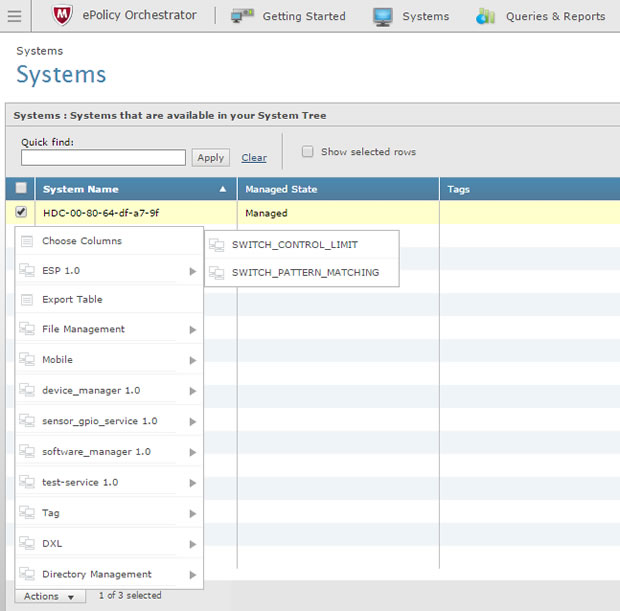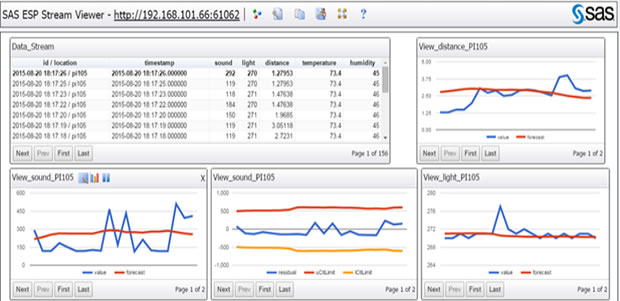How to manage the IoT analytical lifecycle
Since the idea of an “IoT analytical lifecycle,” may be understood in many different ways, let’s start with a definition. Performing analytics at the data center and the cloud is well established practice, and is still quite relevant.
Guest Blog by Saurabh Mishra/SAS
With growing numbers of connected devices and availability of computing capabilities at various layers of the network, however, there is an opportunity to extend internet of things (IoT) analytics towards the edge of the network.
The kind of analytics that can be done closer to the edge will be more localised in nature since it would only be applied towards data emerging from one or a few specific end points in the business eco-system, such as a fleet vehicle, a manufacturing plant floor, an offshore drilling station etc. After the application of these localised analytics, the resulting data still would need to flow back to the data centre or cloud to allow more comprehensive, enterprise level analytics to be applied and used in decision-making, which renders the IoT data more valuable.
For example, cloud or data centre analytics may move from analysing data for a single vehicle to analysing data at the fleet level. This data centre or cloud based analytics would not only drive decision making at the enterprise level but will also result in insights that can improve the localised models that need to be pushed back towards the edge. Establishing this feedback loop from the edge to the cloud or data centre and back to the edge is how we create an analytical lifecycle for IoT.
Why you should care about the IoT analytical lifecycle
There are two clear benefits that can be achieved by enabling an IoT analytical lifecycle:
- Payload reduction: Even with simple data management being done at the edge, organisations would be able to reduce the amount of data needed to transfer from the edge to the centre. This payload reduction has a potential to create significant cost savings from a bandwidth and storage perspective.
- In-time decision making: As we get better with our lifecycle and start pushing improved models to the edge, we start shifting decision making to the edge. This can be invaluable as we can react to changing business conditions in real-time instead of initiating a round-trip between edge and centre.
SAS is uniquely positioned to support the IoT analytics lifecycle due to a decades-long heritage of big data analytics at the data centre and cloud, along with in-memory streaming analytics that extends your organisation’s analytical capabilities all the way to edge devices.
As with most technology rollouts, managing the analytical lifecycle for IoT requires an iterative approach. Organisations typically start doing simple data management tasks at the edge before they graduate to more advanced analytical tasks, which involves pushing new and improved models out to the edge. Edge computing also requires support for a number of other related tasks, such as deploying the in-memory streaming analytics like Event Stream Processing to new devices, updating software versions on any existing devices, stopping and starting the analytics engine, etc.
Supporting such an iterative approach across a scale that could expand to millions of edge devices requires a centralised management approach, which is where our partnership with Intel – WindRiver comes in. WindRiver offers a device management platform, the Helix Device Cloud. SAS and WindRiver have been working together to integrate the device management capabilities of Helix with the SAS Event Stream Processing engine.
The goal of this integration is to ensure that we provide our customers with rapid deployment capabilities built-in to their IoT analytical environment so that they can push changes fast, identify what’s working and what’s not, and move to the next iteration. This allows customers to take ownership of their IoT analytical lifecycle.
An IoT at the edge demo

To highlight this paradigm, we demonstrated a simple “model switching” use case at a recent Intel Developer Forum.
The setup involves a Raspberry Pi with sensors on it to measure light, sounds, distance, temperature and humidity. Data streams from the device back to an IoT gateway running SAS Event Stream Processing engine. This IoT Gateway also has a Helix Device Cloud agent that allows it to communicate to the corresponding cloud platform.
We ran two models inside the Event Stream Processing engine on the gateway against the streaming data:
- A simple model calculating summary statistics of the data (highlighting a good starting model).
- A model that forecasts the values of each of the tags and then measures if the incoming values fall within certain control limits of the forecasted value (highlighting a slightly advanced model).
The results emerging from the active model are displayed within SAS ESP Streamviewer, a browser based visualisation tool for streaming data. We then used the cloud platform of Helix Device Cloud to select the gateway in consideration and switch back and forth between these models and leverage the Streamviewer visualisations to highlight the active model.

Streamviewer snapshot that demonstrates the results coming from the active model
The demo generated excellent responses, including a great deal of appreciation for how we’ve demonstrated the deployment as an intrinsic element of our IoT analytics strategy and not as an afterthought.
If you’d like to dig deeper on the IoT analytical lifecycle, consider joining us for a half-day training titled: How Do You Establish an Enterprisewide IoT Analytics Life Cycle? at the SAS Analytics Experience in Las Vegas on Sept 12, 2016. You can also stop by the IoT booth to see a similar demo or read more about Analytics for IoT.
This post originally published on SAS Voices.


